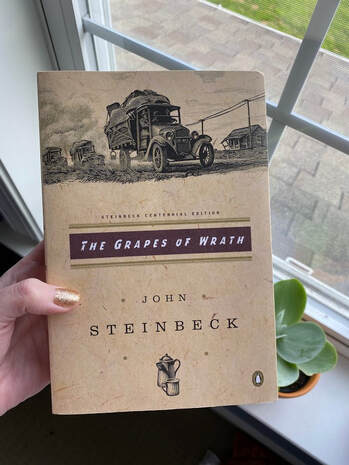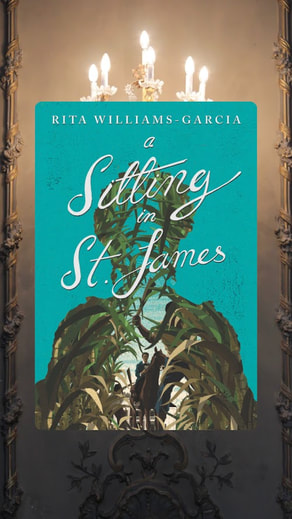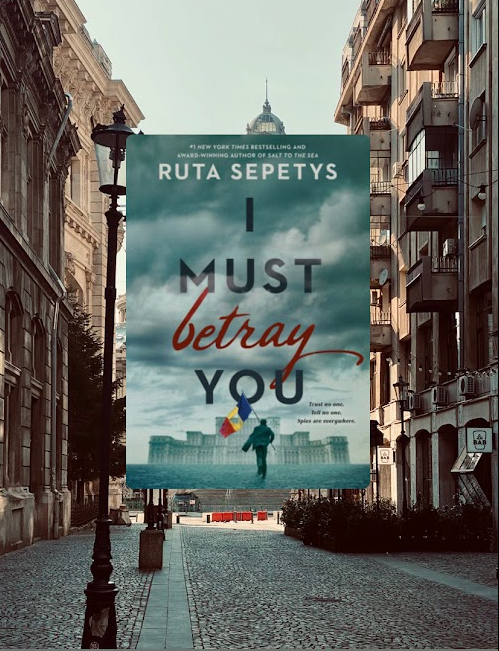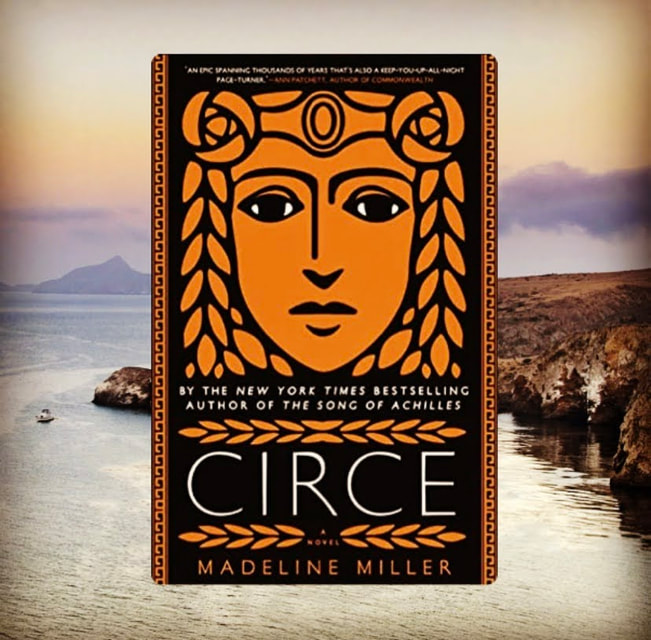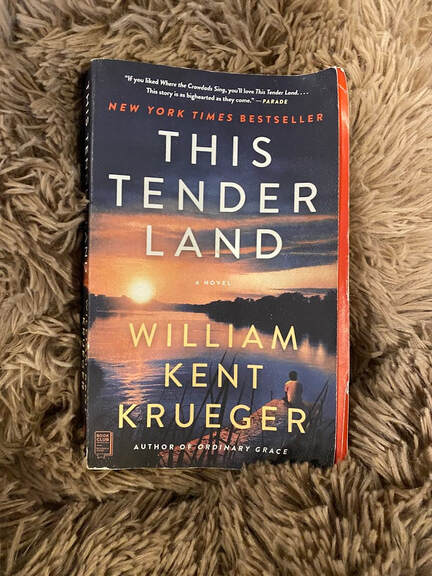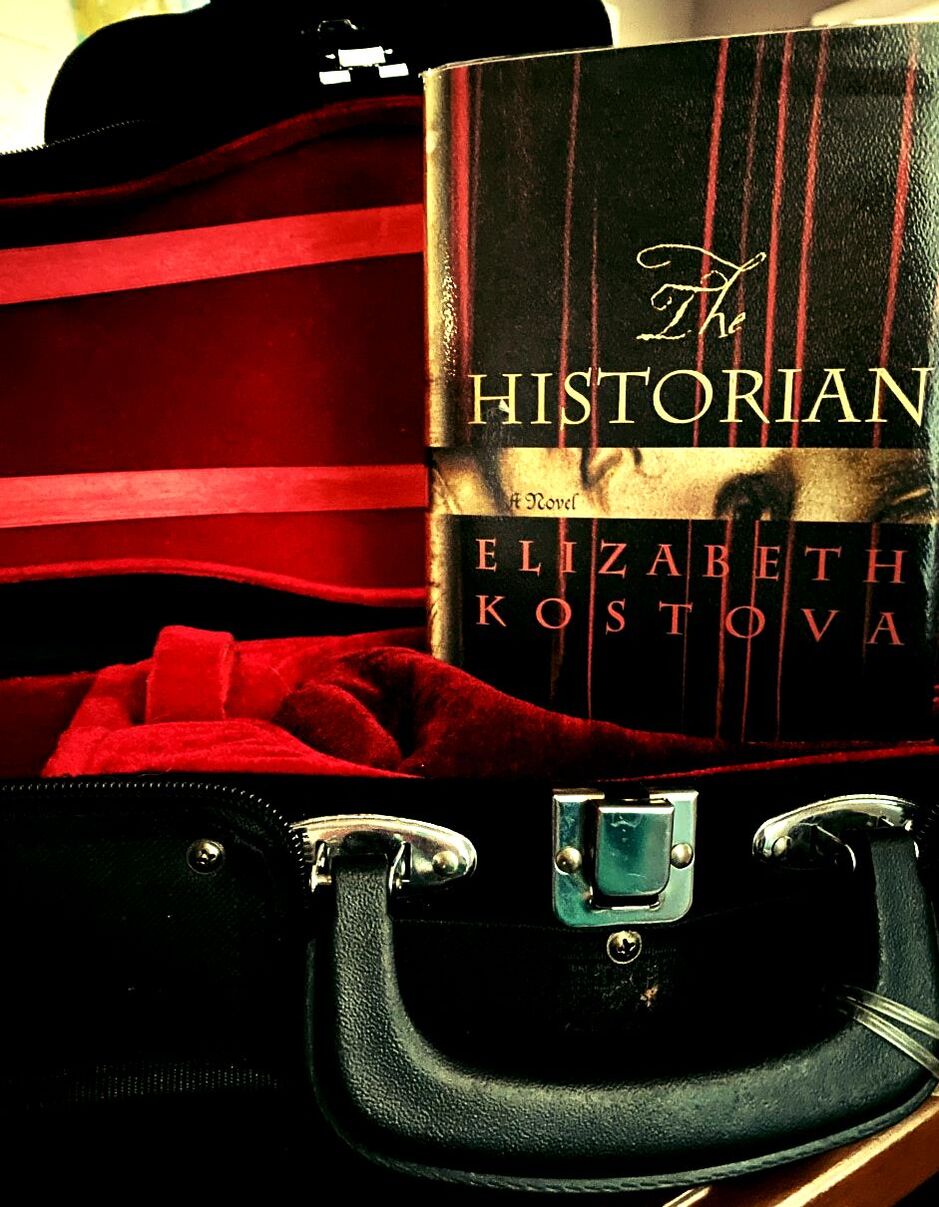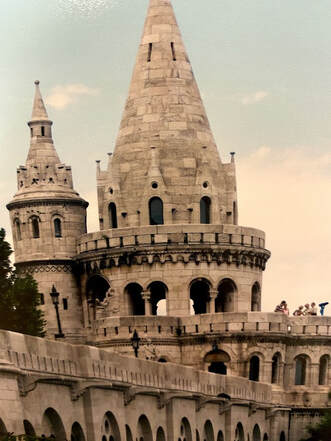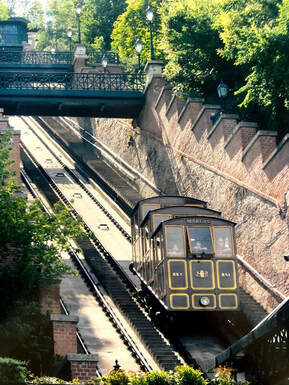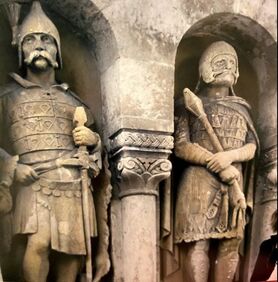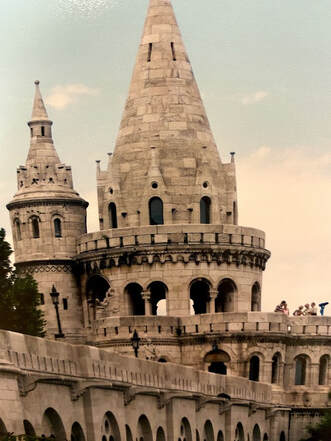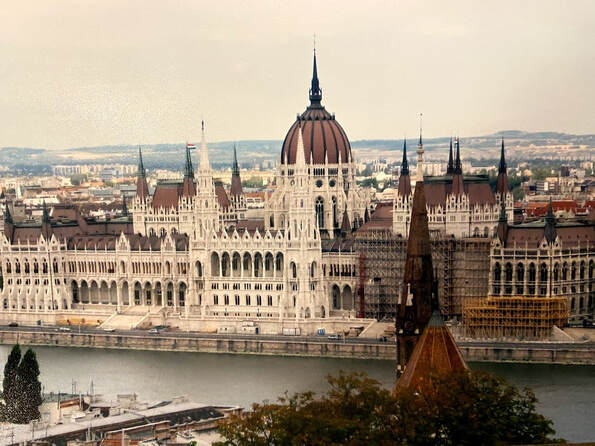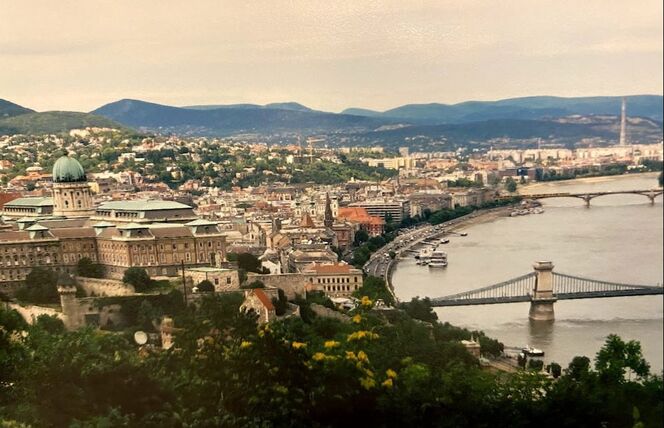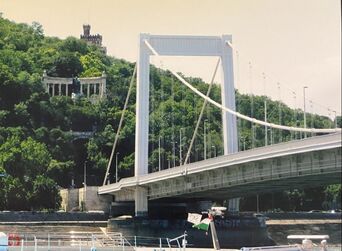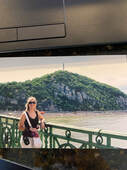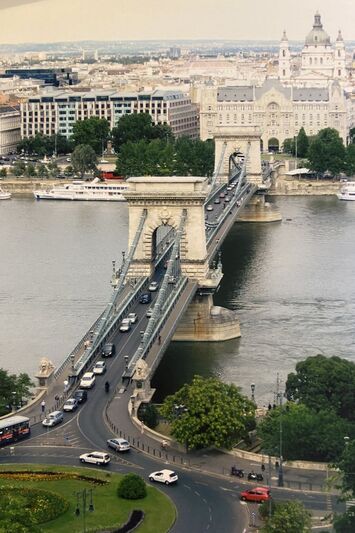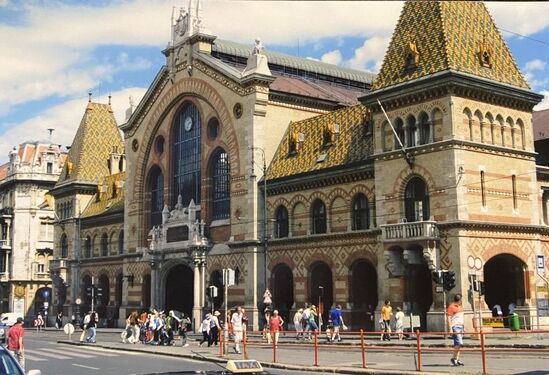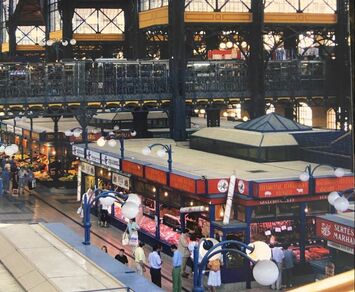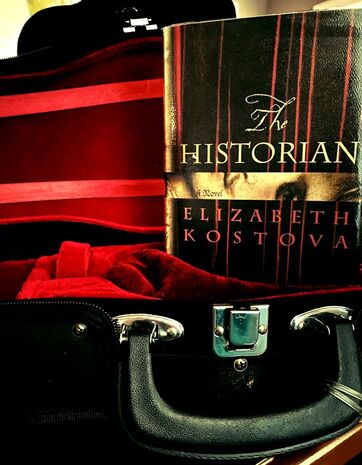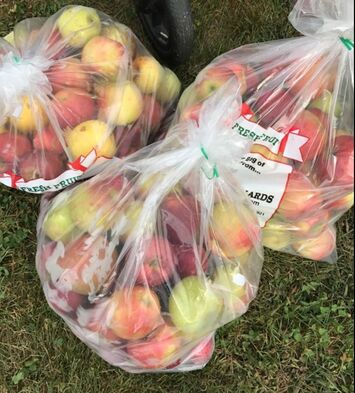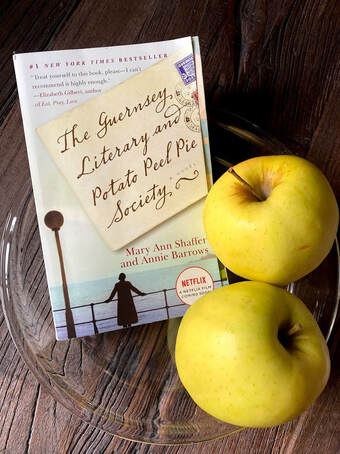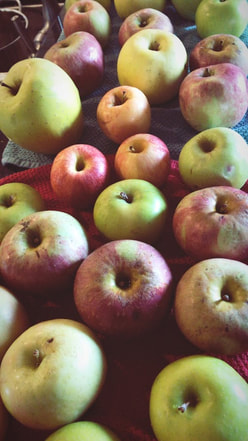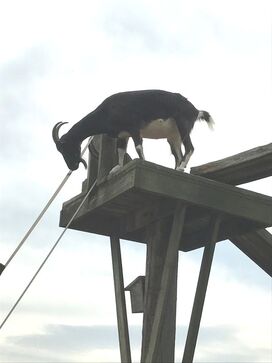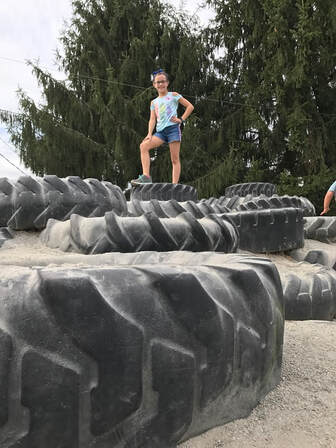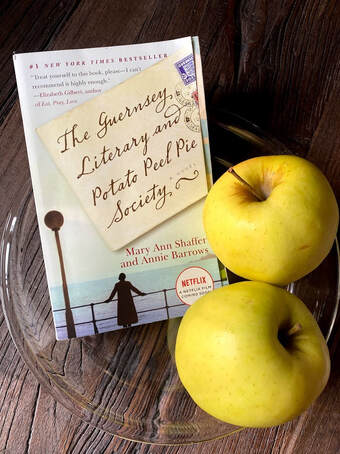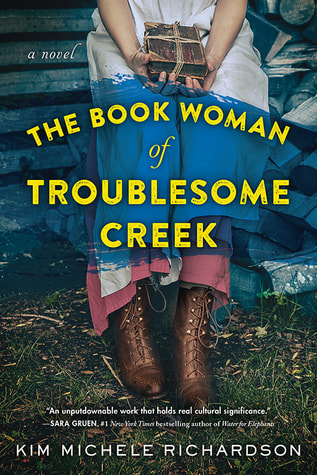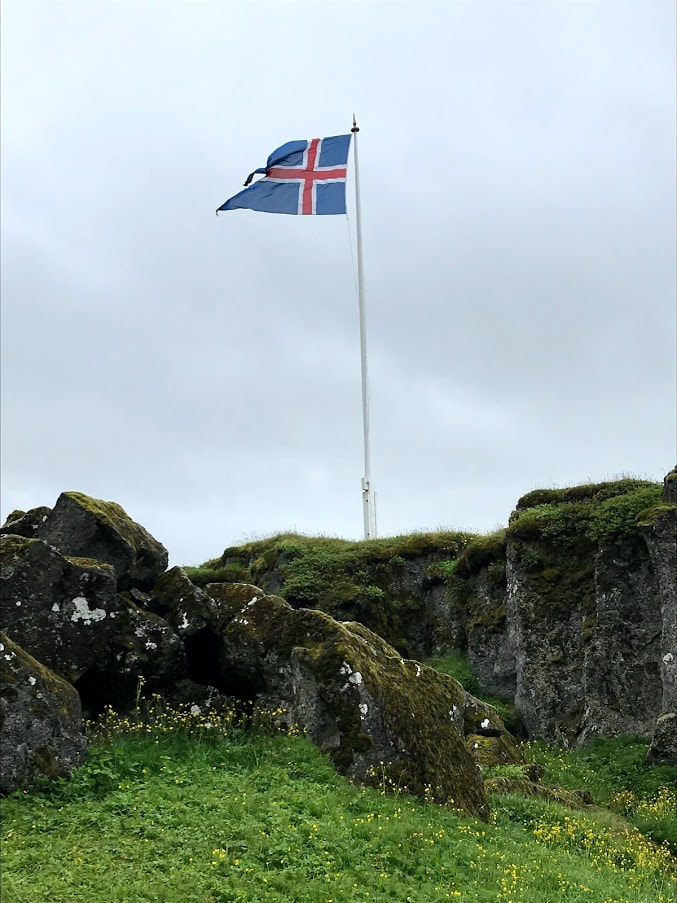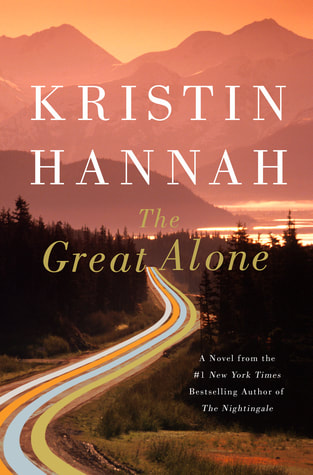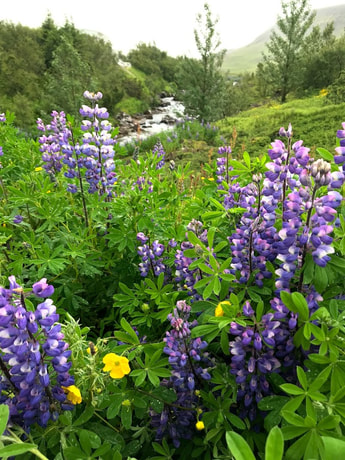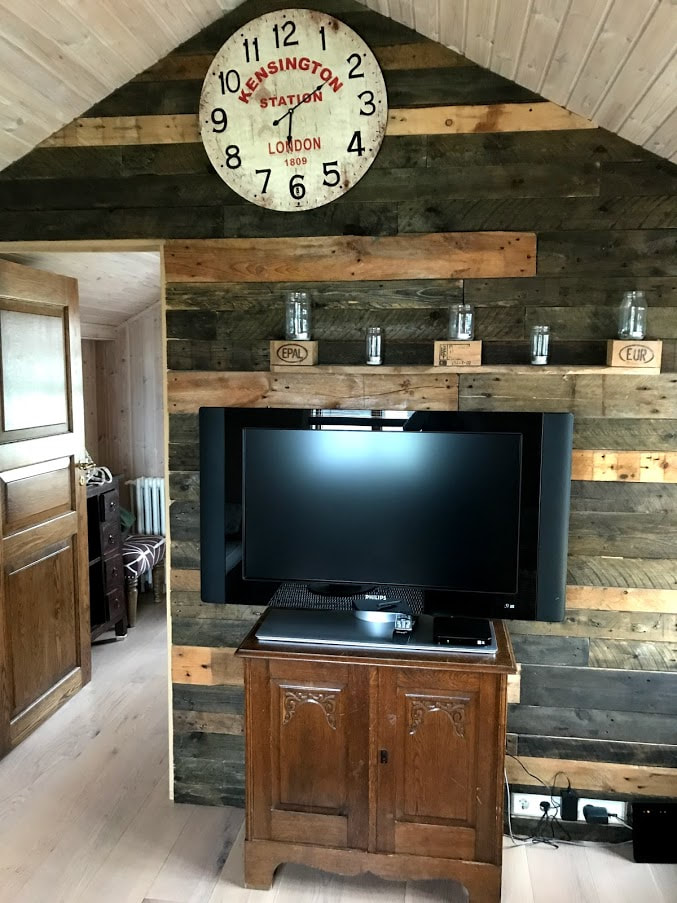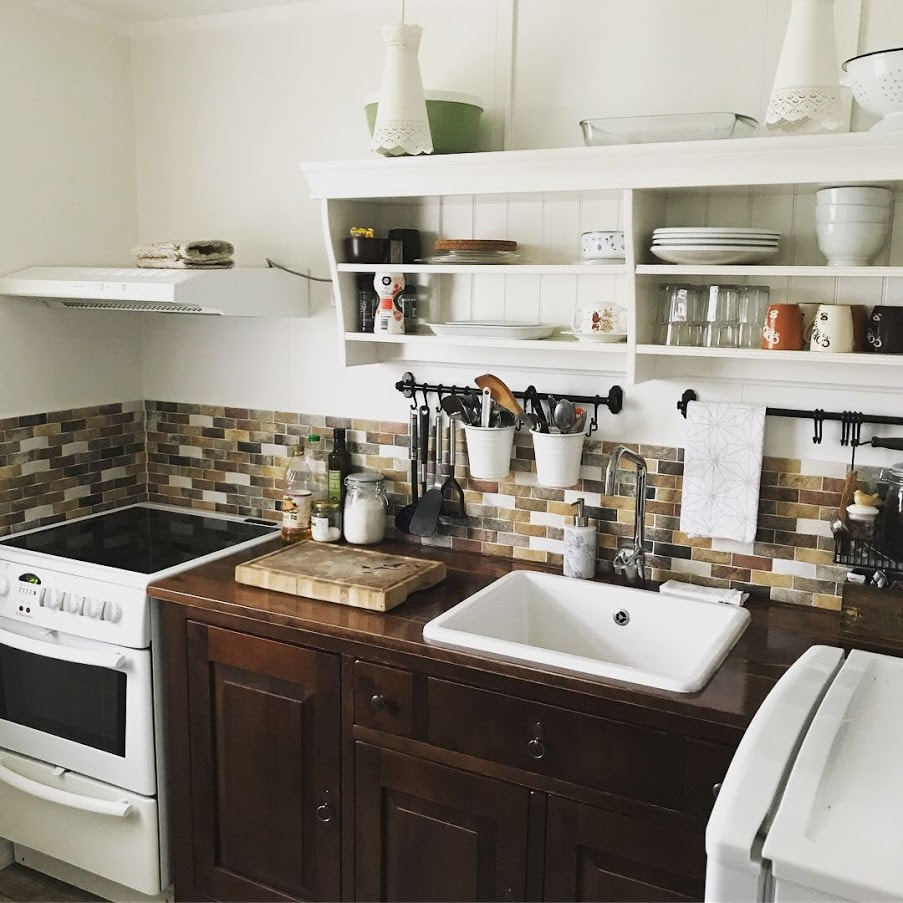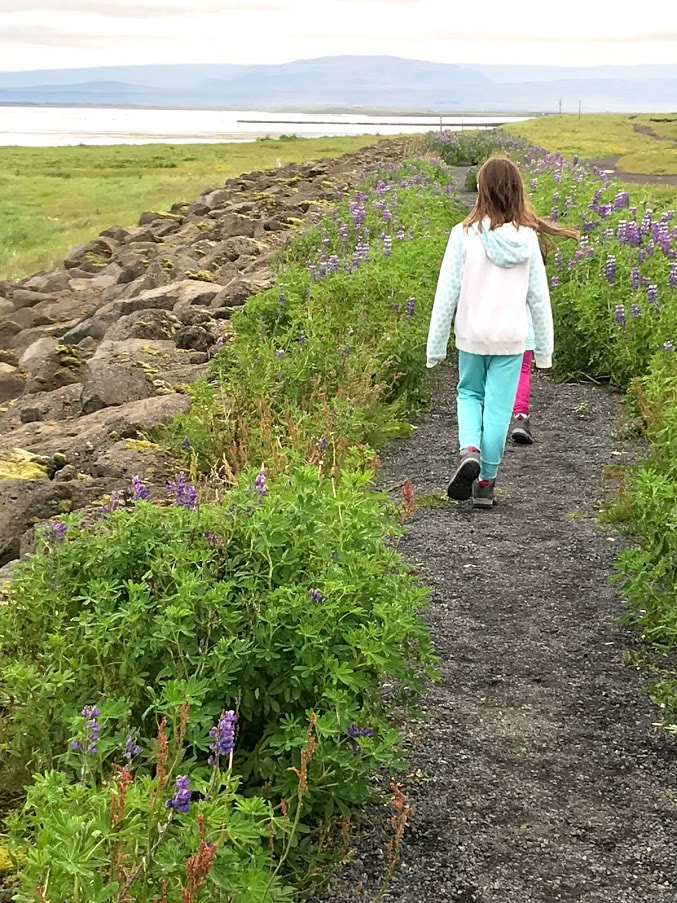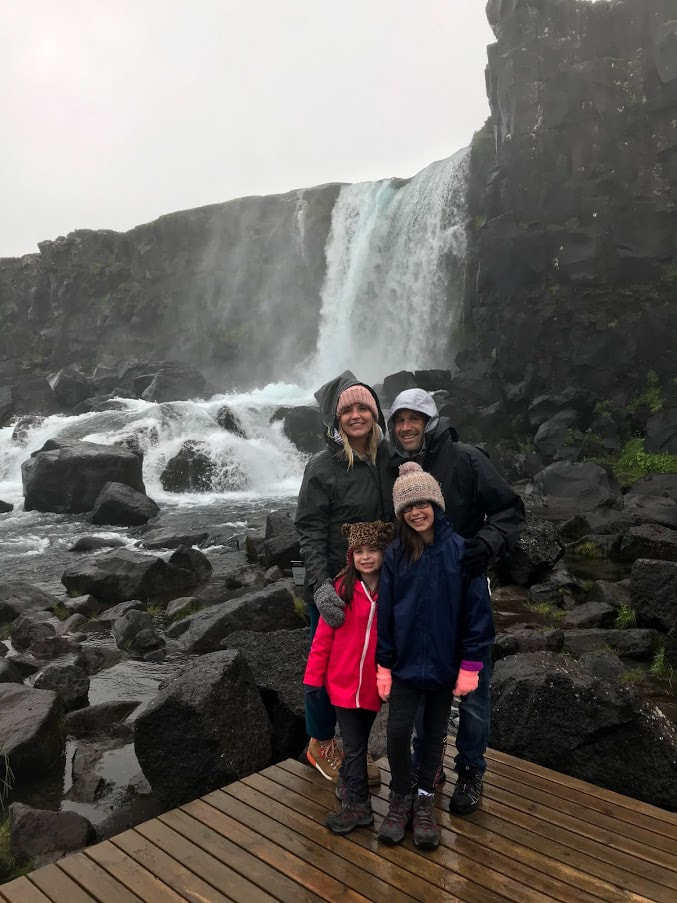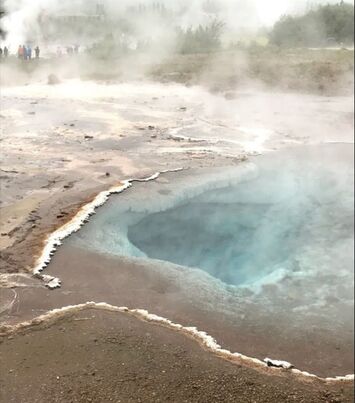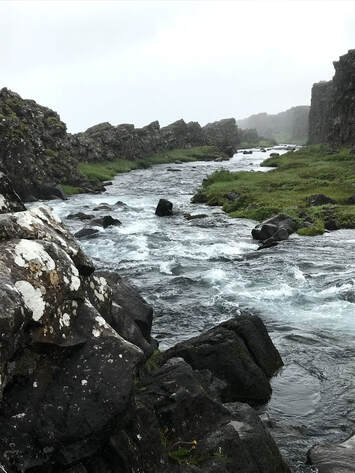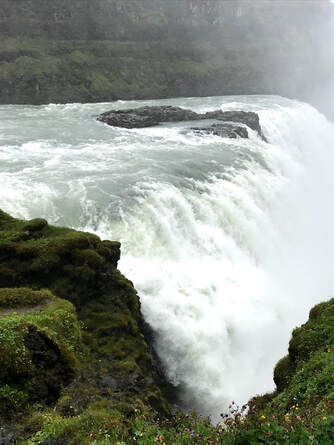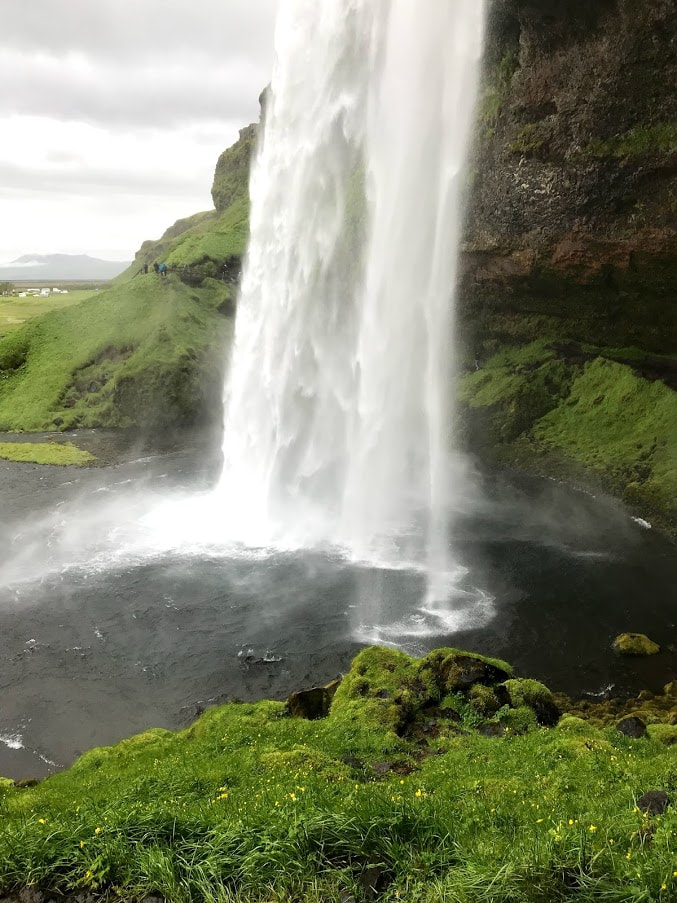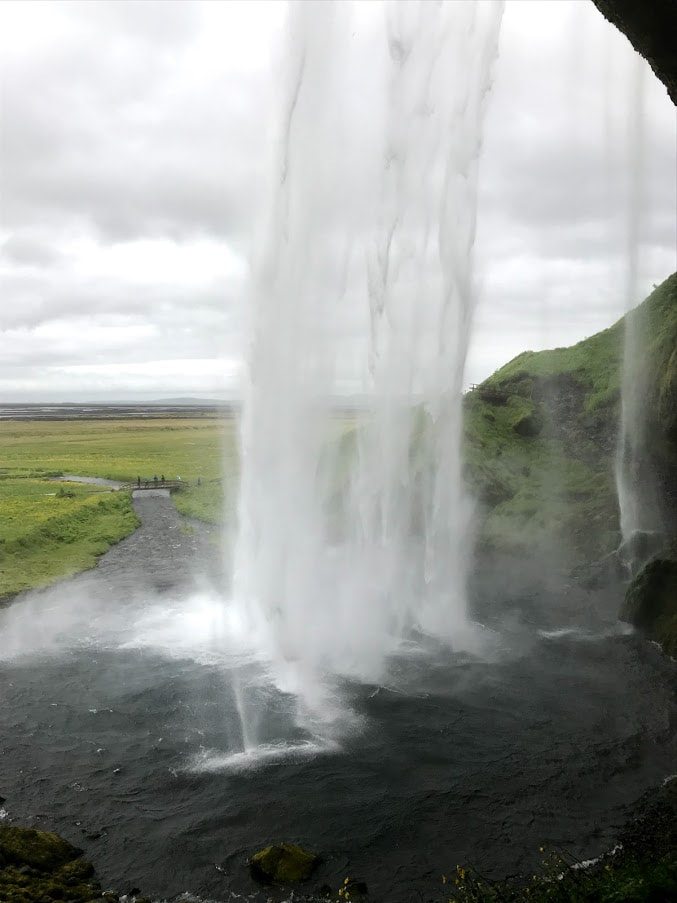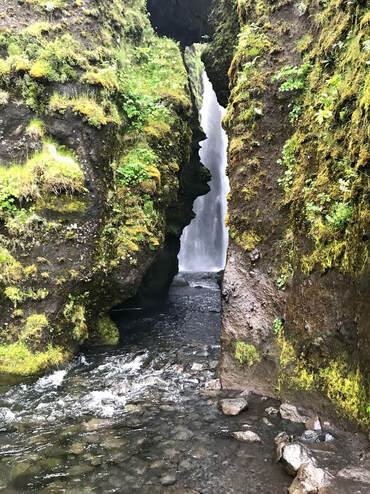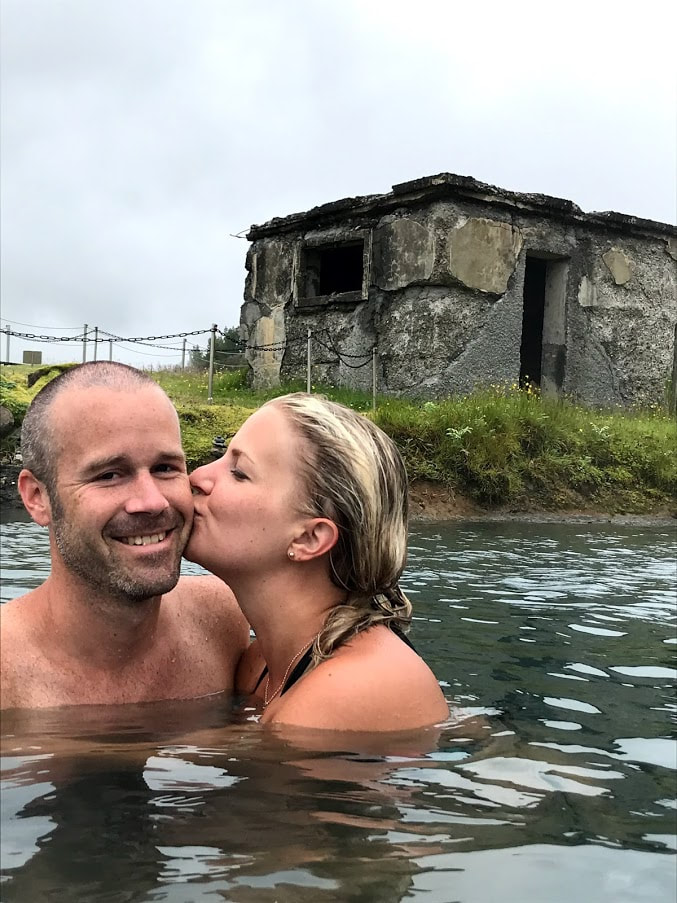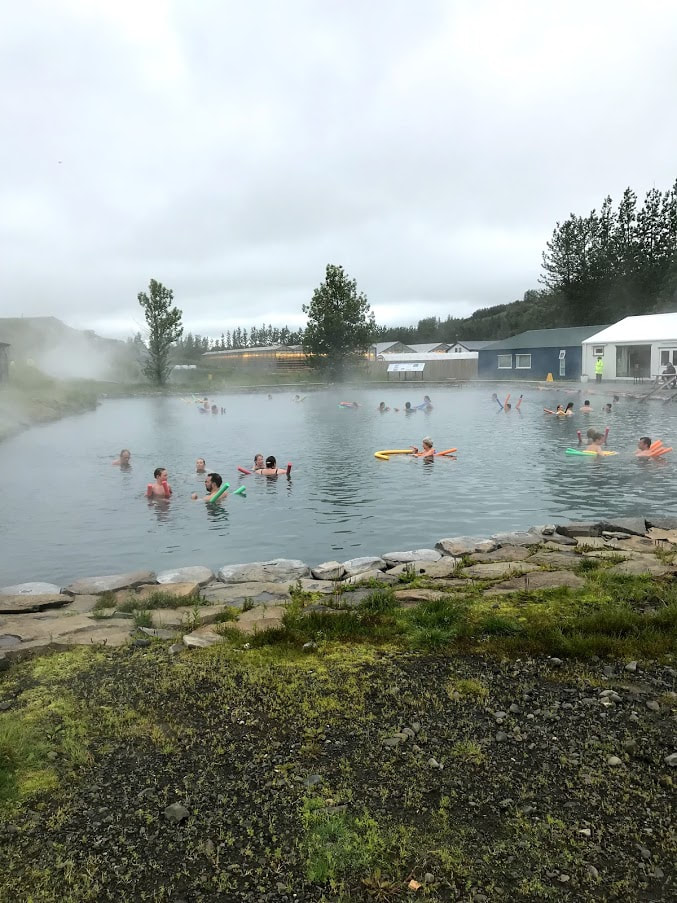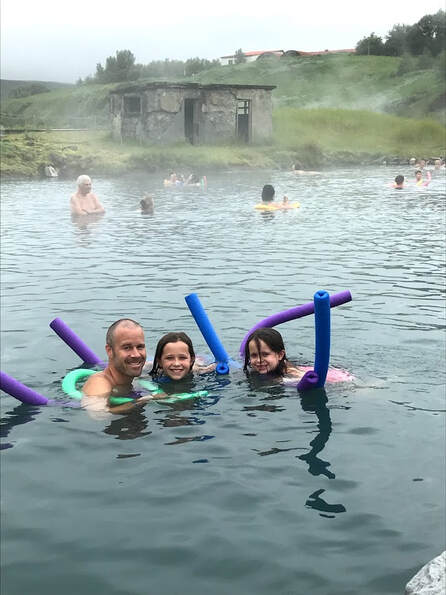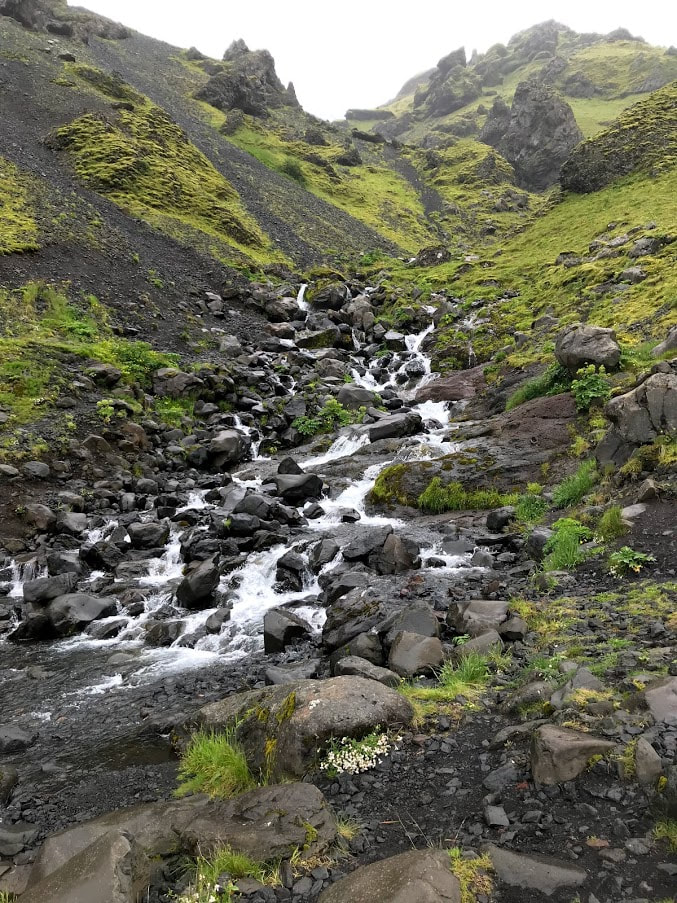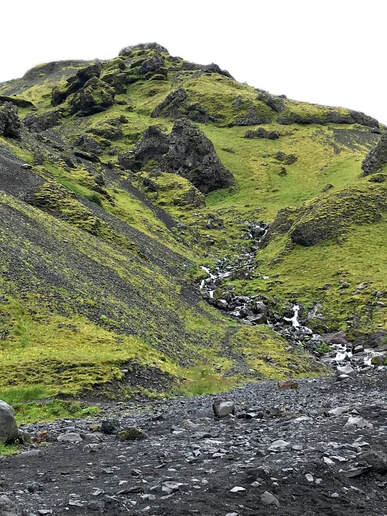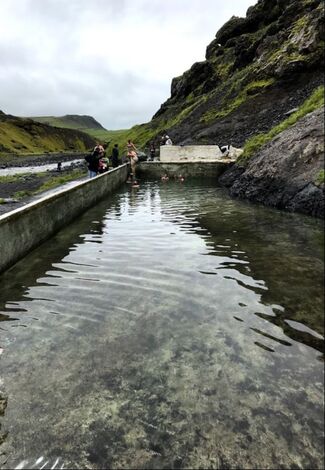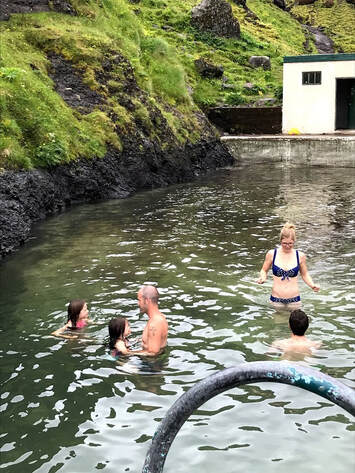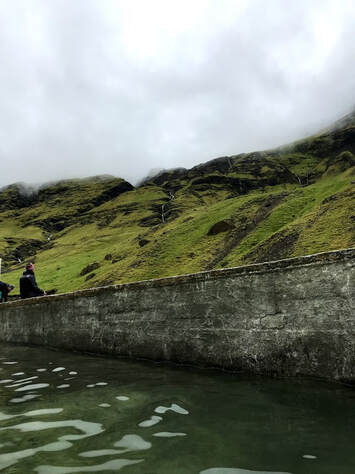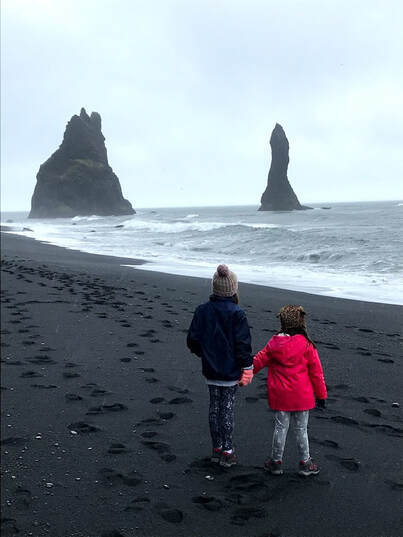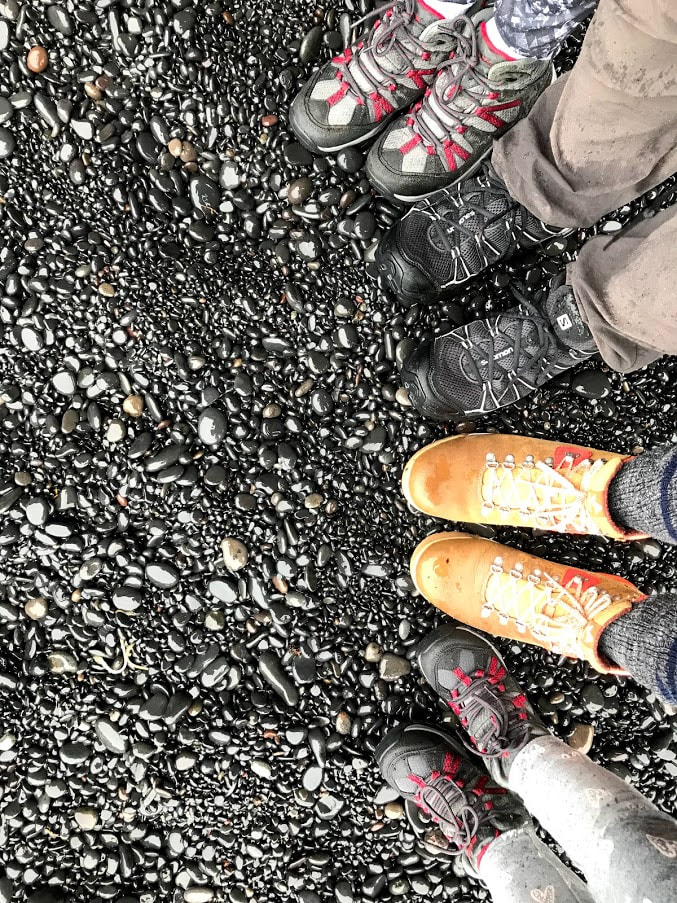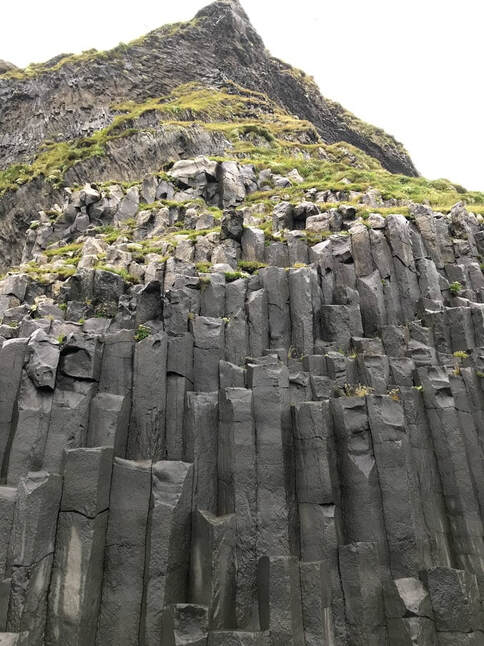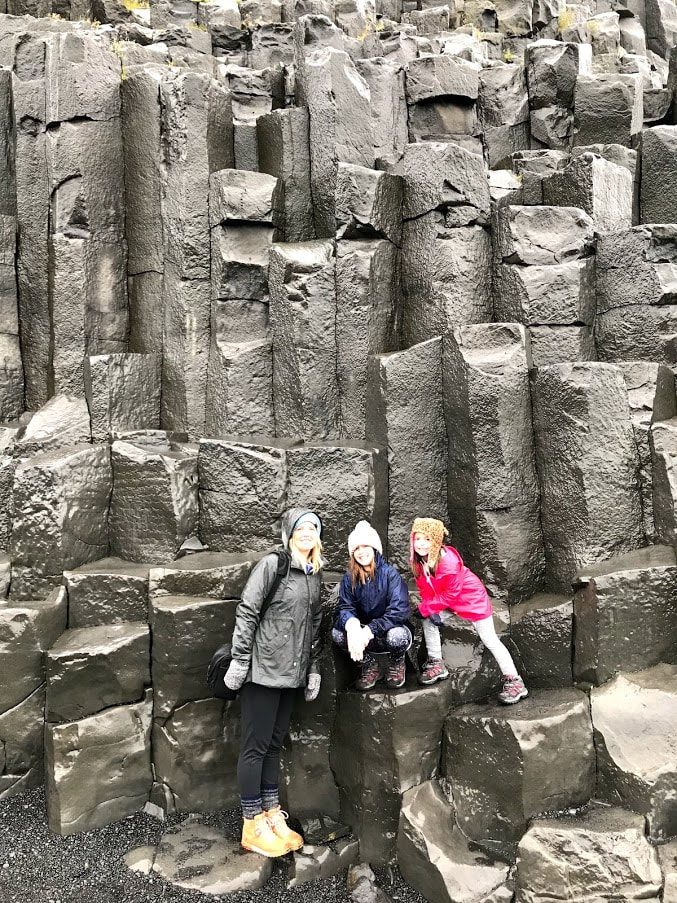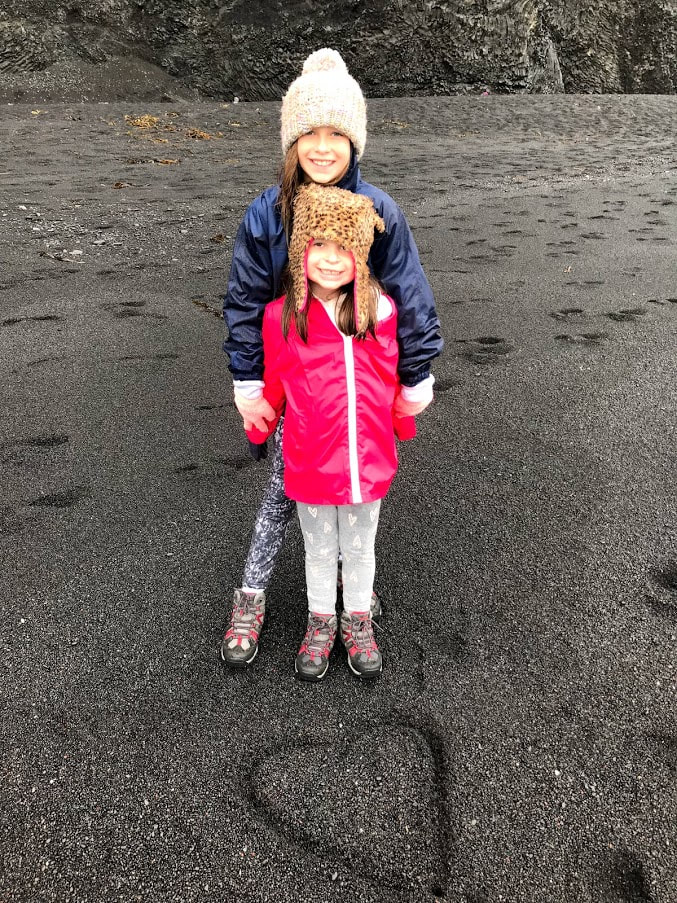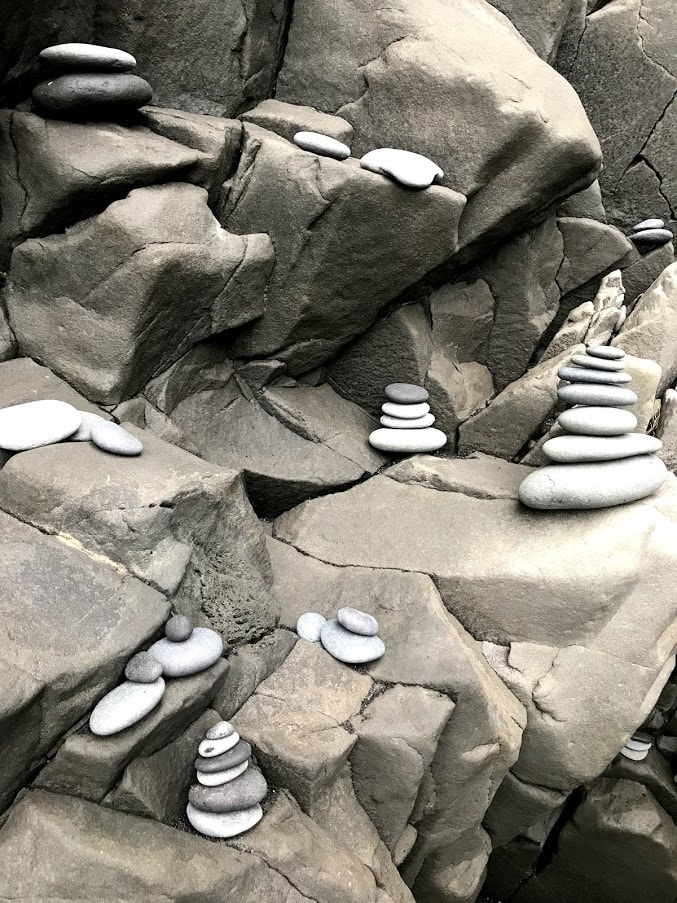|
This is my husband’s favorite book, and he’s been badgering me for years to read it. I always drag my heels when it comes to classics; there are just too many new books that I want to read instead. He wore me down, and I guess I’ll admit defeat. This is an epic novel that captures the prolonged sorrow and fury of migrant families during the Great Depression. The term epic gets thrown around a lot in the book review world, but if I had to give an example, this book would be in the top five. The profound themes reflect the history of the Great Depression but more importantly the humanity of people who find themselves destitute and still able to show kindness and compassion. The main character, Tom Joad, is fresh out of jail, looking to return to his family home. As he meets various people on his journey back, he learns that farm families have been evicted by banks, and people are leaving in droves for California, looking for work and shelter. Steinbeck’s writing is terrifyingly real as he depicts the mass migration with raw, descriptive power. Tom eventually finds his family, and as they too succumb to the draw of California, they encounter one trauma after another, rejected by their fellow Americans. The themes that persist despite their hardships are steadfast dedication to family and the power of pulling together in hard times. The “we take care of our own” vibe persists throughout the book. The final scene of Tom’s sister helping a dying man is a shocking climax to this universal idea of the human experience as one of compassion and altruism. The Grapes of Wrath is classic for a reason, and the rise of fire and dust is still relevant today.
0 Comments
This historical fiction novel explores the complexities and atrocities of antebellum New Orleans on a struggling sugar plantation, Le Petite Cottage. It’s disturbing and grand, horrifying, and eye-opening. It’s one thing to suggest that slavery is atrocious and it’s another to show how slavery stripped human beings of their dignity and self. The violence and sexual content are difficult to read but necessary at the same time. The realities of chattel slavery cannot be censored or glossed over. Rita Williams-Garcia weaves a cast of characters together revealing the many layers that exist between White plantation owners and the people they enslave. Matriarch Madame Sylvie Bernardin de Maret Dacier Guilbert dreams of her glory days in the French royal court. She was taken from France as a child and married off to a plantation owner. She’s arrogant, shrewd, entitled, and thrives on class and racial distinction. Her adult son, Lucien, is equally foul, and they enjoy battling each other for superiority. He tries desperately and pathetically to launch Le Petite Cottage out of debt when he’s not too busy preying on slave women. While Williams-Garcia exposes the Guilbert family’s truly depraved qualities, she also juxtaposes those against painful and tragic events that make them empathetically human. She paints them in dappled shades of darks and lights that are uniquely emotional for readers. Madame Sylvie is both fragile and jagged as her slave servant, Thisbe, wipes her, dresses her, and learns that Madame named her after Marie Antoinette’s dog. Williams-Garcia is a master at ushering the reader to both hate and feel pity for Madame Sylvie as the wretched creature’s big sweeping desire is to sit for a portrait so she can hang onto the last scrap of her legacy. Her grandson and heir to Le Petite Cottage, Byron, lives a double life as a West Point cadet, madly in love with his best friend, Pierce. Lucien does his best to force Pierce to “be a man.” Thisbe is a major character, and although she’s Madame’s personal house slave, isolated from her family day and night, she’s ostracized for having it easier when that’s anything but accurate. Williams-Garcia shows the complex layers of emotion that exist between slaves as they are pitted against one another for favor and survival; the unspoken rules on “how to act” when Whites are around serve as a uniting element. Thisbe “knows her place,” but she’s sharper than Madame Sylvie. She holds her ground, and when Madame Sylvie is at her weakest, Thisbe makes a bold move. A Sitting in St. James is epic, and the tangled emotional impact is jarring. A great book makes you feel, but an epic book makes you question your feelings. This one will sit with me for a long time.
This is not the first of Ruta Sepetys’ books that I’ve read, and it certainly won’t be the last. She’s a master of storytelling and highlighting under-represented events and periods in history in a way that’s relatable for young people. Her latest is another young adult historical fiction that sheds light on the Nicolae Ceausescu dictatorship and communist rule of Romania in the late 1980s. Romanian citizens lived in terror due a vast and intricate spy network composed of ordinary citizens set up to spy on one another for government favors including food, medicine, and electricity. Families and neighbors, teachers and students, coworkers and friends are all starving, paranoid, and constantly looking over their shoulders worried about who will turn them in for voicing even the slightest bit of discontent over Ceausecscu’s rule by isolation, deprivation, and fear. Homes are bugged. Food rations are extreme. Everything is illegal from Coke and Twinkies to western magazines and typewriters. People trade in Kents (cigarettes). This is the world that teenager, Cristian Florescu, is being raised in. He dreams of being a writer, keeps a secret notebook, and instead of dreaming about his future, he watches his grandfather slowly dying and his parents suffering in silence. Cristian finds himself at the mercy of the secret police, Securitate, as they force him to become an informer, using him to spy and report back for medicine for her grandfather. His efforts at subversion reach a tipping point when the Romanian revolution takes hold, and Cristian can no longer be part of the silence. His rage and frustration are loud, and he takes brave risks to become part of the solution to expose the country’s suffering to the world. Sepetys sears this story into your heart. Cristian’s longing, fear, and passion jump off the page and make him come alive. The country’s suffering is heartbreaking. This is a fascinating, somber, and hopeful historical piece that you can only come away from in awe.
This duology is a Romeo and Juliet retelling set in Shanghai in the 1920s. Two major gangs run the city and are constantly embroiled in a longstanding blood feud. Juliette Cai, recently returned from America, is the heir to the Scarlet Gang while her childhood friend and once-flame, Roma Montagov, is heir to the Russian White Flowers gang. A sickness creeps into Shanghai, one that causes people to claw their own throats out, and as gang members on both sides fall to this new rival, both Juliet and Roma struggle to find answers. Is it contagion or a monster lurking beneath the darkness of the Huangpu River? Roma and Juliette have to put aside their differences and work together to save their city. The sexual tension between these two is fire. They feign hatred for one other with intensity but then can’t tear away from each other’s eyes; a single brush of a fingertip sends them reeling back to a time when they cared for each other deeply, and family feuds didn’t matter. The push-pull of attraction is satiating. I love how Chloe Gong immerses this story of love and yearning amidst themes of colonization, identity, and culture. Juliette is Chinese and returns only to find that she feels like an outsider in her own home country as foreigners have taken over the city. Roma is torn between loyalty to his family and the violent path they’ve carved out versus loyalty for people he loves regardless of gang ties. The setting is lush with bright lights and seedy, dark alleys, filth and fringe, holstered guns and flapper dresses, gritty streets and golden decadence, and you can’t help but feel part of the city. I didn’t love the ending; it was a hodge-podge of too many things, and it felt a little rushed but still a gorgeous young adult blend of sweeping classic elements and intricate modern drama.
A powerful woman, characterized as a witch to demean and vilify her success, is a tale as old as time; one that all women can relate to in some form or another. Madeline Miller takes Circe out of The Odyssey and tells how her story is more than just a woman who turns men into pigs. I’ve never really been into mythology and so I was surprised at how quickly I became entranced by Circe’s story. It’s incredibly sad and empowering all at once but showcases her as a feminine force in a world made for men and gods. Circe is the lesser nymph daughter of the mighty Titan, Helios, and she’s outcast immediately as a weak, insignificant nuisance until she discovers the powers of witchcraft, specifically transformation. She’s banished to an island to live out her days as an exile. Circe lives a lonely existence until she chooses to take her power back. She hones her skills, tames the wild beasts roaming free, and makes the island not only her home, but her strength. She’s flawed in many ways, but Miller doesn’t shy away from showing Circe’s weaknesses as this is exactly what makes her such a relatable and compelling character. A host of familiar mythological figures cross paths with Circe including Icarus, Daedalus, the Minotaur, Hermes, and Odysseus, but it’s clear that they’re only fleeting elements of HER story. I ached for Circe; her pain and loss, so raw throughout her lifetime, is a constant that she faces and accepts but never succumbs. She suffers as a daughter, lover, and mother but ultimately uses her scorn as fuel for triumph, and I rooted for her on every, single page.
This Tender Land is everything I want in a book – heart, depth, humor, sweeping historical elements, mystery, adventure, and an ending that leaves me feeling right with the world. This was my top read for 2021. Originally, I bought it for my husband who gobbled it up in mere days and then raved about it so intensely that I read it just so he’d stop pestering me. He just wanted me to fall in love with it the same way he did. I quickly fell under the book’s spell, so now he’s happy. It’s a Huck Finn and Wizard of Oz-style mash-up adventure set in 1923 during the Great Depression. Odie, Albert, Mose, and Emmy set out on an epic journey after leaving the Lincoln Indian Training School in Minnesota where Native American children were forcibly separated from their families and stripped entirely of their heritage, language, and identity. Odie and Albert O’Banion, both white, were sent to live as orphans at the Lincoln because it was the only place in the area that had room. Odie constantly gets into trouble with Mrs. Brinkman who runs the school and doles out cruel punishments with intense enjoyment. The O’Banion brothers’ best friend, Mose, is a mute Sioux who speaks by sign language. The boys all have a special place in their hearts for little Emmy, daughter of one of their kind teachers. Tragedy strikes in the form of a tornado and a crime that implicates them all, changing the course of their lives forever. They set out in a canoe on the Gilead River, hiding from their secrets and searching for themselves and a place to call home. They meet a caravan of characters, from sinister to divine, where they learn about what friendship, identity, forgiveness, and family really mean. I imagine this book will be studied as a classic someday. The metaphor of the river propelling them on this life journey is mythic and powerful. This is the kind of book where writing is showcased as a craft - finely tuned, layered, and with thoughtful attention to every word and phrase. I felt like these kids were my pals, dragging me along on their river odyssey. I cling to their stories; I ache for their despair and cry fat, happy tears for the brief moments of joy and belonging that juxtapose the gloom of the Depression era setting. William Kent Krueger ingeniously writes this legendary story in a way that feels both nostalgic and contemporary at the same time. This Tender Land has the darkness of Stand By Me [The Body], the wistfulness of the Grapes of Wrath, and the heart of The Princess Bride.
Prologue My husband and I, as inexperienced international travelers, embarked on a six country European travel blitz a few years after getting married. We had no idea what we were doing, but this trip is what started our travel obsession. Out of the six cities we stopped in, Budapest was the one that left me with the most wonder. Split into two parts, Buda is the western, hilly side with grand views and thermal spas. Pest (pronounced PESHT) is the flat, commercial business side. The two sides united into one city in 1873, but they couldn't be more distinct. Budapest has a beauty and grandeur that I wasn't expecting. There's a curious juxtaposition of atmospheres here that entranced me from the moment we arrived. Turning Pages: Places to Check Out
Hungarian Parliament Building This was under renovation when we visited, and we didn't end up visiting the interior of the building at all. Taking in this grand structure from across the Danube both during the day and night are some of the most vivid memories I have from our entire Europe trip. The symmetry of all the arches and spires is dazzling. I can't imagine living and working in a place where this is your view on a daily basis. How does this thing even exist? Bridges Galore Younger, thinner, and sporting natural, unprocessed hair, I couldn't get enough of these bridges. They're everywhere. I loved how each bridge has it's own character and personality. The Elizabeth Bridge is modern while the Chain Bridge is more historic and the most recognized in all of Budapest. Vaci Utca This street is known as the soul of the tourist district. Here you will find tons of shopping and cafes, all located along a pedestrian walkway lined with sophisticated buildings. Szechenyi Baths We were surprised to learn that Budapest is well known for its thermal waters, and there are many baths to choose from, each with it's own unique features. The baths all use the mineral-rich water from the ground and are great for entertainment, healing, and just general relaxation. Completely unprepared and having done zero research ahead of time, we chose one, Szechenyi, and showed up with suits in hand. The man in the window knew we were idiots as we couldn't figure out what to do. He spoke no English, and this was before cell phones so we couldn't look up anything to translate. As I said before, we were very inexperienced and should have been prepared to ask for help in Hungarian. There was a menu hanging up above the ticket window, so we randomly pointed to something and hoped it was an entrance ticket we were paying for. He pointed to a door and off we went. We went to separate gender changing rooms and then met up on the other side in a beautiful room with tall columns and a long, skinny pool. There are varying temperatures in each of the different indoor pools, and we tried several. The outdoor pools weren't open when we visited which was a bummer because they're incredibly grand. See photos and videos of both: Menu Pages: Eats and Drinks Great Market Hall This indoor market is located on the Pest side, and is an overwhelming assault on your senses. You can definitely spend hours here eating your way through the first floor food vendors. Try the langos. These are a deep-fried bread that you can get with various sweet or savory toppings. We tried the cheese, and it was amazing and incredibly cheap.
Unicum Hungary's national drink, Unicum is everywhere. We had it in shots before a meal. It's bitter and has a piney taste that was just too medicinal and herbal for me, but it obviously has its fans all over this country. Appendix: A Hodge PodgeHolocaust Memorial Center - a moving tribute to the more than half a million Hungarian citizens/deports who became victims in the Holocaust Heroes Square - largest square in Budapest Folk Dinner and Gypsy Show - lots of places offer folk shows, and these are fun to watch people in traditional Hungarian costumes dancing with bottles on their heads and cracking whips. They often grab tourists out of their seats to join in on the fun. Postscript: What I Missed There are oodles of places that we didn't get to and wish we had. These are just a few on our list for next time. Royal Palace (Buda Castle) - includes the Hungarian National Gallery, the National Széchenyi Library, and the Castle Museum Gellert Baths - has an Art Nouveau style and an outdoor wave pool Danube river cruise - we did one in Amsterdam instead so we decided to skip it here Faust Wine Cellars - sample wines underneath Buda Castle Budapest is only one of the stops in this impressive historical fiction monstrosity, and the city fits the vampiric, moody vibe of this book like a sleek, black velvet glove. Review
Vampires and librarians and history, oh my! It's a nerd trifecta, and I loved every bit of it. You have to love historical fiction to read this. It's very dense in the history department but in an exquisite, luscious, romantic kind of way. It's also a beast of a book, literally. At 642 pages, I found myself slogging through it at times and just wishing it would wrap up. In the end, I was satisfied and glad to have stuck it out. The narrator begins the story as a young girl who finds a book with a woodcut of a dragon in it among her father's things. She asks him about it, and Paul slowly and reluctantly unravels the story. The book mysteriously appeared in his study carrel when he was a younger man studying at the library during his graduate program. Interested in it's origin, he takes the book to his mentor, Professor Rossi and is stunned to find out that Rossi also has a copy of the same book. Rossi explains that in his research of the strange book, he uncovers information about Vlad Tepes (Dracula) and believes he is still alive. Soon after, Rossi goes missing, leaving behind a blood-smeared office. Paul is devastated and heads off on a whirlwind world adventure to figure out what happened to his beloved mentor. All three characters are presumed to be white. The book weaves in and out of libraries, small villages, quaint cafes, and monasteries. The adventures span various cities including Amsterdam, Istanbul, Budapest, and a host of other eastern European locations. I was spellbound by the vivid descriptions of each location. Elizabeth Kostova does an incredible job capturing the hypnotic effect of traveling around the world. Not only was the travel meticulously detailed, but the historical backgrounds of every, single location were weaved in so seamlessly, you felt like you were part of each page. Now I love historical fiction, but this one really crammed it in. The middle pages got repetitive, and I was wishing for a change of pace in the plot elements. I wasn't sure if I would ever finish this book, but you could tell this was a dramatic labor of love for this author. Without spoiling too much, I can't stop thinking about how awesome it is to have beady, little librarian vampires roaming around. I keep imagining scrawny, bat-faced men dressed up in tweed suits. Libraries are pretty much my world and combining these two elements is almost too much for my bibliophile heart to take. Prologue Looking for something Fall festive to do on weekends? We love Milburn Orchards in Elkton, Maryland for many reasons. I started going there to buy apples to make my own applesauce but ended up staying longer each time to enjoy all of the family fun activities they have. Turning Pages
This is quintessential Fall fare, and I'll never tire of going to places like this. This book is best for reading on Fall nights, snuggled under a blanket next to a cozy fireplace. It's the type of read that although sad at times, just makes you feel warm on the inside. Author Juliet Ashton is in London trying to rebuild her life after the war and trying to find something new to write about. Happenstance delivers a letter from a man on Guernsey, a Channel Island off the coast of Southern England, and through their correspondence, Juliet finds her next great story. Guernsey was occupied by the Germans during WWII, and a group of unlikely people banded together to form a society for lovers of literature, and a front for gatherings during the time of occupation. This group of interesting characters leans on one another through harsh times, and Juliet finds inspiration in their stories. She begins correspondence with the members and discovers a taboo love, sweet friendships, heroic acts of bravery, and all manner of other intriguing, memorable stories. Juliet becomes so enamored with the people of Guernsey that she becomes intertwined in their lives in ways that ultimately change hers as well.
This book is written entirely in letters. It's charming, and really funny. I was surprised how often I found myself laughing. There is lightness and gloom, but it's done in a way that blends the multiple story lines together seamlessly and authentically.  The Book Woman of Troublesome Creek by Kim Michele Richardson The Book Woman of Troublesome Creek by Kim Michele RichardsonMy rating: 4 of 5 stars Yet another book that shows why librarians are the coolest and toughest scrappers hitting the grind for literacy. This evocative historical fiction set in the 1930s paints a vivid picture of Appalachian Kentucky and the hill country's colorful, impoverished people. Cussy, also known as Bluet for her blue-tinged skin, is feared, loved, and hated by everyone. She is the last living female with her blue-skin condition, and is treated as a pariah by people who don't understand it's just a genetic condition caused by an enzyme deficiency. Cussy is tough but extremely kind and giving. She takes a job as a Pack-Horse Librarian after a brutal forced marriage that almost led to her death. She rides a cantankerous mule through the twisted and and dangerous Appalachian hills to reach her patrons, bringing them reading material and the loving, kindnesses of a true, gentlewoman. I used to volunteer housing service work in Appalachian Kentucky as a teen, and the imagery depicted in this book really brought me back in time. I loved reading about that swirling fog, switchback roads, and fiercely loyal neighbors. Cussy is determined to reach her patrons, and they return her dedication with kindness that turns out to be her saving grace in the end when she needs it most. This book is rife with sorrow but also spilling over the top with heart-warming goodness. View all my reviews Prologue
We never really planned on going to Iceland. Our original itinerary for the girls' first international vacation was Nicaragua. We had everything researched, flights booked, Airbnbs reserved, transportation arranged, and then the 2018 protests and civil conflict erupted making travel with kids too dicey for us. My husband randomly suggested Iceland, and as I started reading about it, I got hooked on the idea. We switched out our shorts and sandals for rain jackets, sweaters, and hiking boots.
I planned our trip around three different areas that seemed realistic with a six and nine-year-old. Originally, I thought we could do this major haul and drive the whole way around the island in a week, but after I started researching, the possibility of that with kids was pretty much out of the question. I reeled in the fantasy and gave ourselves some wiggle room. I pared it down to three and a half days exploring the southern coast, two and a half days around the Snaefellsnes western peninsula, and a day and a half in Reykjavik.
General Notes: 
Transportation - We took a red-eye flight and did not sleep at all on the plane. We felt comfortable enough to drive on our own, so we rented a car through Blue Car Rental. They have a free shuttle from Keflavik International Airport which worked out really well for us. We were exhausted but motivated by pure adrenaline to see as much as possible on our first day which ultimately felt like a sleep-deprived hallucination on a frosty planet of lush green mountains and milky, jade water. I highly recommend driving in Iceland. There were so many moments where we stopped spontaneously and saw things that weren't planned. I can't imagine seeing this country any other way.
Lodging - Because of the last minute travel plans, we found Airbnb to have the most reasonable rates with interesting and unique accommodations. Our first night was an adorable little tin cottage in a tiny fishing village on the southern coast called Eyrarbakki. It didn't look like much from the outside, but the inside was quaint and comfortable. Our host welcomed us with some licorice-flavored chocolate. We did explore the village and coastline, and enjoyed the sleepy feel of the area.
Weather and Time Change - Our visit was in July which is also Iceland's summer. Their summer months only average a temperature of 55°F so it's nothing like our hot, humid summers in PA. We packed lots of rain gear, hats, and wore layers and hiking boots every day. We had a fair amount of rain and a few days that were in the low 60s. When the sun is shining, Icelandic people flock to their decks and lawns in bathing suits. We're walking around in sweaters while everyone else is out sunning. They probably thought we were nuts all bundled up like that. The other lovely thing about Icelandic summers is the never-ending daylight. 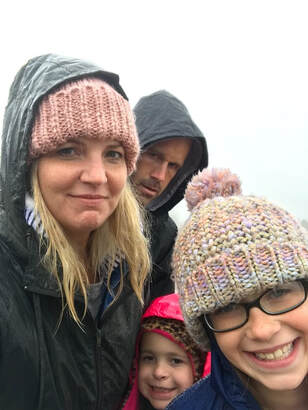
Our nights and days were messed up from day one since we caught an overnight flight. Then the sun shines crazily past 10pm, and it makes you feel like the day never ends, basically because it doesn't! Our youngest was at her melting point one night, and I couldn't understand why she was so cranky. I checked my phone and realized it was 10:30pm, sun blasting us past the ability to gauge time. We slept in really late after our first night, and this helped. We also made sure our Airbnbs had black-out shades, and we brought melatonin along for getting settled in when the body is tired but the mind is thinking it's noon adventure time. Turning Pages: Places to Check Out
The Golden Circle
This route takes you from Reykjavik to three of Iceland's most well-known tourist attractions including Þingvellir (Thingvellir) National Park, Geysir Hot Spring Area, and Gullfoss Waterfall. The circle can be driven in one day, and we did all three before heading to our Airbnb. I would definitely love to go back and spend some more time in Þingvellir (Thingvellir) National Park as we really only saw the Öxarárfoss Waterfall on our quick spin through these top sites.
Seljalandsfoss Waterfall
This is the waterfall I dream about. There are so many incredible things about this country. One is that there are lots of free and inexpensive things to see. While you may be spending a lot on food and gas, the sightseeing is very affordable. The other thing that we love about Iceland is how raw and undisturbed everything is. You can view nature without all sorts of ropes and signs up warning off stupid behavior. I couldn't believe this place. Not only is the water cascading from impossible heights, but you can also walk the whole way around the falls and see it from behind. We were like little kids dancing under the droplets and watching the rainbows shine from every angle. The rocks are slippery and the going is slow, but Seljalandsfoss is something out of a fantasy movie.
After taking in Seljalandsfoss, continue down the trail along the mountains and you'll see some beautiful wildflowers and other falls. The girls were especially excited about this gem hiding behind a crack in the cliffs, Gljufrabui.
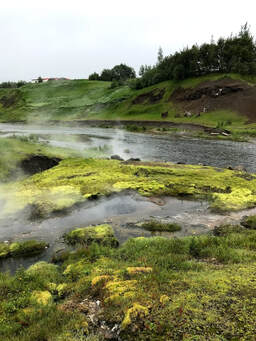
Secret Lagoon (Gamla Laugin)
Iceland has geothermal hot springs everywhere. They also have tons of swimming spots that are fed by these naturally occurring springs. The Secret Lagoon was our favorite. Locals call it Gamla Laugin, "Old Pool," since it was the first public swimming pool. The hot springs surround the man-made pool and run directly into it . Some areas in the pool are just warm and those closer to the bubbling, mushy springs are hot, hot, hot. Lounging in this hotpot water was ahhhhmazing. They even supplied pool noodles to float around on. The bottom is made of large, smooth rocks that make the whole experience feel completely natural and relaxing.
An important note about hot pot swimming hole etiquette ... you have to shower and wash with soap before entering the pools, naked and with other guests. It's a big deal here, and we prepped the kids for it ahead of time. Custom requires you to shower fully and wash off any contaminants you may have on your skin before entering the swimming area. It's like gym class all over again. Ultimately, it's really not a big deal but nice to know before you go.
The surrounding mountains and billowing fog made for a hazy dreamlike setting, but then you get closer and see that the pool is pretty decrepit. The day we were visiting, the water level was less than half of what it should be. You could see the water line left on the rocks and mud, making the shallow end only about ankle deep. Even though this was disappointing, we still wanted to have the experience so we left our clothes with our backpacks and climbed into the pool. The bottom was slimy and there were chunks of mud and sediment floating everywhere. We walked around, snapped a few pictures, and got out of there. The water was lukewarm at best, and we were freezing in that brisk Icelandic air. Changing out of our wet clothes in the ramshackle building was an adventure.
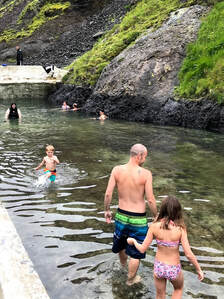
The hike would have been too cold in wet clothing, so we definitely had to brave the co-ed changing shed. It's really just a concrete room with a few hooks. Too many tourists have trashed the place leaving it a junky mess. Get in, get changed FAST, and take all of your crap with you. It was quite an experience. The views from the pool were incredible. The hike was incredible. The pool was not so much but in all, a fun adventure worth checking out.
Reynisfjara Black Sand Beach
This famous beach was used in filming for Game of Thrones, and I can see why. It's dark and dramatic with black pebbles, black sand, caves, and intimidating rock formations. It poured rain all day when we visited Reynisfjara which was such a bummer. This was one of my favorite two things we saw, and I could have easily spent hours wandering around. Parking is free, and they do have pay bathrooms available as well. Even with our full rain gear, we were soaked all day. We didn't let the rain stop us from exploring, and the weather only added to the moody environment. It felt like a place where it should always be raining.
The beach is juxtaposed with towering basalt columns. There are also lots of warnings about dangerous sneaker waves that can roll onto the beach at any time. Make sure to visit at low tide times so you have enough beach area to walk on without getting too close to the water and so you have enough safe space to view the black, looming columns. We also found all sorts of little rock sculptures and stacks left by creative visitors.
Menu Pages
Postscript: What I Missed
Things to hit up next visit:
Thingvellir National Park : Silfra Fissure - you can dive or snorkel in the crack between two tectonic plates in what is said to be the clearest water in the world Faxi Waterfall - part of the Golden Circle drive Kerid Crater Lake - a bright blue lake inside a volcano surrounded by red rock. This is also part of the Golden Circle route. Laugarvatn Fontana - natural steam baths/pools and a geothermal bakery. Wait, what? They dig up pots of fresh bread from the hot, black sand. Um yes please. Slakki Petting Zoo - Admission includes a mini-golf course Skogafoss Waterfall - beautiful falls that come directly from two different glaciers Myrdalsjokull - glacier sitting atop the volcano, Katla where people take lots of tours on snowmobiles or into ice caves Skogar Museum and Turf Houses - museum to experience Icelandic architectural heritage. We were lucky enough to see some turf houses from the road while driving but did not get to see this museum. Landmannalaugar - Rhyolite Mountains, lava field and hot springs. The mountains consist of a range of geological elements that leave them dappled with lots of contrasting colors. Solheimssandur airplane wreckage and beach - Ugh we almost made it to this one. This was the day it was pouring at Reynisfjara. We stopped to start this hike but the rain was so torrential, and the girls were so tired, we just couldn't get into the spirit it required. This is a longer hike along a black sand beach to a real plane wreck. The abandoned plane, a Navy DC, ran out of fuel in the 70s and crashed on the beach. Dyrholaey Arch - a massive rock arch with lots of birds to watch Svartifoss Black Falls - waterfall surround by basalt columns in Skaftafell in Vatnajökull National Park Jökulsárlón Glacier Lagoon - take boat tours to see the wildlife and free-flowing icebergs. Check out the black sand at Diamond Beach. This beach has little ice chunks lying all over the sand like glistening diamonds.
I reviewed this book earlier on it's own but was having a hard time finding a new pairing for Iceland. Although Kristin Hannah's book is set in Alaska, it brings to mind a lot of the things we loved about Iceland. Both settings are vast, dangerous, beautiful, and unique. They both share a lush bounty but also an element of wildness. People travel to these locations to see nature in its raw forms, and that experience can be life-changing.
 The Great Alone by Kristin Hannah The Great Alone by Kristin HannahMy rating: 3 of 5 stars It's me not you. I feel bad that I'm not crazy about this book. It's just a book with no feelings, yet I want to prop it up and just can't. The writing is beautiful and sets the scene of Alaska's untamed, dangerous, and addicting landscape. There's really nothing wrong with the book. I think part of my issue was that I just didn't have a lot of time and was reading it in such small doses, that I lost my connection with it. I couldn't absorb the setting and characters in the way they deserved. Leni's father, Ernt, comes home from his time as a POW in the Vietnam War, and fights demons that manifest in violence with his family. He's irrational and impulsive and packs the family up to head to Alaska to fend for themselves while retreating from the world. Isolated and unprepared, Ernt forges ahead, quickly making enemies. Leni finds comfort in her newly learned independence and the strength of the local people who show her kindness and compassion. Her coming-of-age arc also includes her mother, Cora, who is the main target of Ernt's rage. Leni finds her first love and a tragic end amidst the formidable allure of the Alaskan backdrop. Kristin Hannah's book paints a raw and emotional picture of domestic violence and the way in which it festers and infects all those involved. View all my reviews |
AuthorTravel All the Pages is inspired by my two loves - travel and reading, a combo I can't resist. Enjoy these little pairings. Archives
March 2023
Categories
All
|
